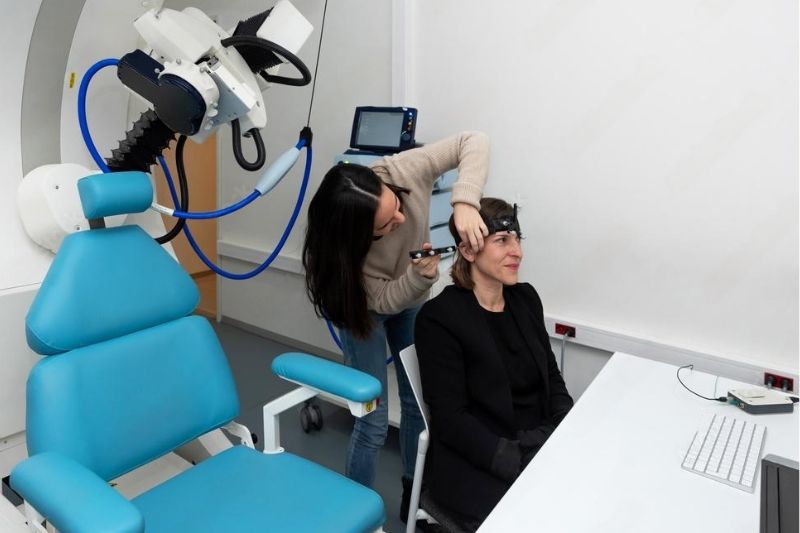Chronic pain is a complex and multifaceted condition that affects millions of individuals worldwide. Unlike acute pain, which signals immediate harm and dissipates as healing occurs, chronic pain persists for weeks, months, or even years, often without a clear cause. While discussions usually focus on treatment and management, there’s much more to explore about this condition, especially how innovative techniques like Transcranial Magnetic Stimulation (TMS) intersect with our understanding of pain.

At its core, pain is a signal sent by the nervous system to indicate that something is amiss. However, chronic pain can persist without any detectable injury or illness, suggesting that it may be rooted in the brain's perception rather than a physiological cause. This has led researchers to explore the intricate pathways that contribute to pain perception and how these might be altered in chronic pain sufferers.
Recent studies suggest that chronic pain can lead to changes in the brain's structure and function. These changes may result in a heightened sensitivity to pain signals, meaning that individuals may experience pain more intensely or from fewer stimuli than those without chronic pain. Understanding these neuroplastic changes is crucial in developing new approaches to mitigating chronic pain.
Chronic pain doesn't just affect the body—it impacts the mind and emotions as well. It can lead to a host of psychological issues, including anxiety, depression, and a decreased quality of life. The pain can create a cycle where physical pain leads to emotional distress, which in turn exacerbates the perception of pain. Breaking this cycle requires a holistic approach that addresses both physical symptoms and mental health.
Transcranial Magnetic Stimulation offers a unique window into these aspects of pain. By stimulating specific areas of the brain, TMS can potentially influence mood and emotional well-being. This is particularly relevant considering the close link between chronic pain and mental health issues.
While Transcranial Magnetic Stimulation (TMS) is primarily discussed as a treatment, its application extends beyond therapeutic outcomes. The technique offers researchers a powerful tool to explore brain function, particularly in understanding pain pathways and networks. By modulating neural activity, TMS can help identify regions of the brain involved in the experience and modulation of pain.
Significantly, Transcranial Magnetic Stimulation (TMS) research contributes to the broader understanding of how pain is processed and perceived, offering insights that could lead to novel approaches in pain science. This includes identifying biomarkers for chronic pain and understanding individual differences in pain perception and response.
Apart from biological factors, pain is also influenced by cultural and social contexts. Different cultures interpret and respond to pain differently, affecting how individuals experience and report their pain. These cultural perceptions can influence the degree of stigma associated with chronic pain, access to healthcare, and support systems.
As a novel technology, Significantly, Transcranial Magnetic Stimulation research contributes to the broader understanding of how pain is processed and perceived, offering insights that could lead to novel approaches in pain science. This includes identifying biomarkers for chronic pain and understanding individual differences in pain perception and response.
Raises questions about accessibility and implementation across different societal contexts. Exploring these themes helps in understanding how chronic pain and its potential interventions are perceived globally and how cultural factors can be integrated into personalized pain management strategies.
The intersection of Transcranial Magnetic Stimulation (TMS) and chronic pain research opens exciting possibilities for the future. Areas of interest include exploring how individualized TMS protocols could be developed to target unique pain signatures in patients, potentially providing more effective and personalized interventions.

Transcranial Magnetic Stimulation Therapy
Transcranial Magnetic Stimulation involves a series of sessions specifically designed to alleviate chronic pain.

Transcranial Magnetic Stimulation Therapy
Effective chronic pain treatment, Transcranial Magnetic Stimulation (TMS) as groundbreaking and innovative option.

Transcranial Magnetic Stimulation Therapy
This article examines potential of Transcranial Magnetic Stimulation (TMS) in managing chronic pain.

Transcranial Magnetic Stimulation Therapy
Understanding Chronic Pain and Exploring Role of Transcranial Magnetic Stimulation (TMS.
